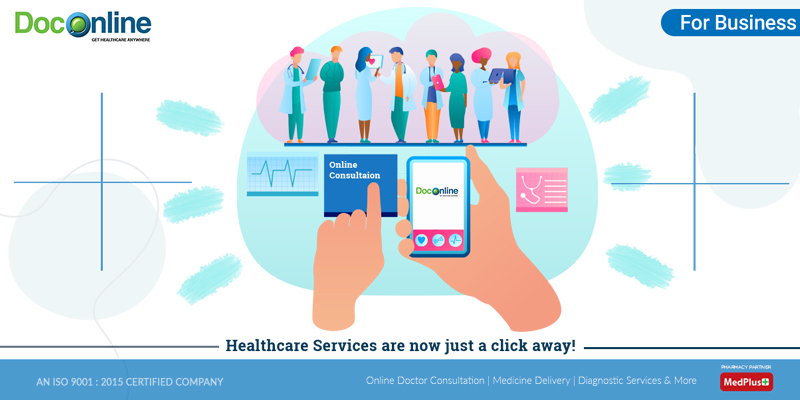Discover the Perks of Subscription Based Healthcare for Affordable Medical Care
Discover the Perks of Subscription Based Healthcare for Affordable Medical Care
Blog Article
Just How Subscription-Based Health Care Is Changing the Medical Industry

The Rise of Subscription Medical Care
In recent times, the healthcare sector has seen a substantial change in the direction of subscription-based models, reflecting broader consumer fads favoring comfort and predictability. This transformation is driven by the boosting need for more easily accessible and individualized treatment solutions. Registration medical care, sometimes referred to as concierge medication or direct health care, supplies clients a set monthly fee for a series of clinical services, substantially altering traditional fee-for-service designs.
The surge of subscription health care is promoted by innovations in modern technology, which enable structured interaction between people and companies - subscription based healthcare. Digital systems and telehealth services have actually become indispensable, supplying people the capability to schedule visits, accessibility clinical documents, and obtain assessments online. This technical combination not just boosts patient involvement but likewise permits service providers to deliver extra effective treatment
In addition, the registration model lines up with the progressing assumptions of individuals that look for even more control over their healthcare expenditures and experiences. While this version is getting grip, its spreading deals with challenges such as regulatory hurdles and the necessity for more comprehensive approval within the standard healthcare ecosystem.
Benefits for People and Carriers
Subscription-based healthcare provides a multitude of benefits for both service providers and patients, improving the characteristics of healthcare. For patients, this version offers boosted access to medical care solutions. With a predictable regular monthly cost, patients can appreciate unrestricted appointments, lowered wait times, and individualized treatment. This setup usually causes an extra positive approach to health monitoring, permitting timely treatments that can prevent chronic conditions from rising. Additionally, the financial transparency of subscription versions lowers the unpredictability related to standard fee-for-service invoicing, minimizing the worry of unanticipated medical expenditures.
For healthcare service providers, subscription-based designs foster a more lasting and satisfying technique. By protecting a constant profits stream, service providers can focus on supplying top quality treatment without the stress of volume-based solution. This model urges longer client assessments, promoting more powerful patient-provider partnerships and enhancing health and wellness end results. In addition, it uses suppliers the versatility to innovate and integrate holistic and preventative treatment practices. Administrative tasks are frequently streamlined, decreasing above prices and permitting providers to dedicate more time to person interaction. In general, subscription-based healthcare lines up the rewards of clients and companies, promoting a more patient-centered and reliable health care shipment system.
Secret Attributes of the Design
Frequently, the vital functions of the subscription-based medical care design emphasize its distinct strategy to providing clinical services. Central to this design is the principle of foreseeable, regular monthly settlements, offering patients a detailed series of hop over to these guys solutions without the unpredictability of standard fee-for-service structures. This model frequently includes limitless accessibility to medical care services, precautionary treatment, and routine examinations, ensuring that individuals can engage with their doctor proactively as opposed to reactively.
Additionally, direct interaction networks, such as telemedicine and messaging platforms, are emphasized, allowing people to receive prompt recommendations and appointments without requiring in-person consultations. This enhances accessibility and ease, particularly for people with mobility restraints or those staying in remote locations. The version additionally fosters more powerful doctor-patient partnerships, Website as doctor are incentivized to concentrate on lasting health results as opposed to temporary sees.
Furthermore, subscription-based health care usually integrates technical advancements, such as electronic health and wellness documents and wellness tracking applications, to give reliable and customized treatment. Clients gain from coordinated and continual treatment management, which is customized to their details health and wellness requirements. Eventually, these functions jointly produce a patient-centered healthcare experience, focusing on accessibility, cost transparency, and preventative care.

Considerations and difficulties
While the subscription-based healthcare version supplies various benefits, it is not without its challenges and considerations. One substantial obstacle is guaranteeing fair gain access to. Membership versions might unintentionally prefer those with greater socioeconomic condition, possibly widening variations in healthcare access Recommended Site for lower-income people who might battle with regular monthly costs. This increases ethical concerns regarding inclusivity and equity in health care shipment.
An additional challenge depends on regulatory conformity. Subscription-based health care has to browse a complex web of regulations that differ by area, including issues around client discretion, data defense, and state licensing demands. Making sure conformity without restraining the design's adaptability and innovation can be daunting for providers.
Furthermore, there is the threat of overutilization or underutilization of services. Clients paying a fixed fee could overuse services, resulting in boosted functional costs, while others could underutilize because of be afraid of straining the system, potentially ignoring needed care.
Future Prospects and Innovations
The landscape of subscription-based healthcare is positioned for makeover with emerging advancements and progressing leads. As modern technology proceeds to advancement, the combination of expert system and artificial intelligence offers significant chances to boost analysis accuracy and improve individual administration. Anticipating analytics can change preventative care by identifying potential wellness threats prior to they manifest, consequently decreasing both expenses and the burden on health care systems.
Furthermore, telemedicine is readied to increase within subscription versions, offering patients boosted access to medical care professionals no matter geographical constraints. This not only assists in connection of care yet likewise equips clients to involve even more proactively in their health and wellness management. In addition, blockchain modern technology offers potential in safeguarding person data and guaranteeing interoperability across platforms, promoting trust and transparency.
The advancement of tailored medicine is an additional frontier, with membership designs supplying an unique structure for supplying tailored wellness options. Genetic testing and personalized therapy plans can be perfectly incorporated, straightening client requires with specific medical interventions. In addition, partnerships in between tech business and doctor are most likely to generate cutting-edge options, improving client experiences and end results. As these potential customers appear, subscription-based healthcare has the prospective to redefine just how treatment is delivered and accessed.
Conclusion
Subscription-based healthcare is transforming the clinical sector by providing an extra accessible, predictable, and patient-centered approach to medical services. In spite of obstacles such as governing difficulties and possible differences in gain access to, the membership model holds guarantee for a much more effective and customized healthcare experience.
Registration health care, occasionally referred to as concierge medication or straight key care, supplies people a fixed month-to-month cost for a variety of medical solutions, dramatically modifying conventional fee-for-service designs.
Additionally, the registration model straightens with the advancing expectations of people that seek more control over their medical care costs and experiences. For patients, this model provides improved accessibility to healthcare services. Generally, subscription-based healthcare aligns the incentives of service providers and people, promoting a much more reliable and patient-centered medical care delivery system.
Moreover, telemedicine is established to broaden within registration designs, offering individuals enhanced accessibility to health care experts no matter of geographical restrictions. - subscription based healthcare
Report this page